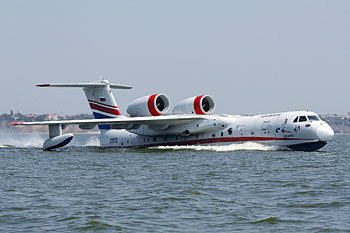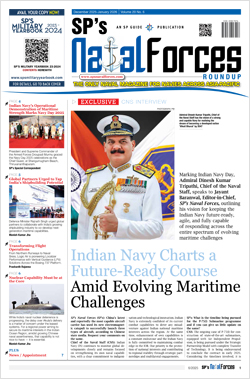INDIAN ARMED FORCES CHIEFS ON OUR RELENTLESS AND FOCUSED PUBLISHING EFFORTS

The insightful articles, inspiring narrations and analytical perspectives presented by the Editorial Team, establish an alluring connect with the reader. My compliments and best wishes to SP Guide Publications.

"Over the past 60 years, the growth of SP Guide Publications has mirrored the rising stature of Indian Navy. Its well-researched and informative magazines on Defence and Aerospace sector have served to shape an educated opinion of our military personnel, policy makers and the public alike. I wish SP's Publication team continued success, fair winds and following seas in all future endeavour!"

Since, its inception in 1964, SP Guide Publications has consistently demonstrated commitment to high-quality journalism in the aerospace and defence sectors, earning a well-deserved reputation as Asia's largest media house in this domain. I wish SP Guide Publications continued success in its pursuit of excellence.
- Global Partners Urged to Tap India's Shipbuilding Potential: Rajnath Singh at Samudra Utkarsh
- All about HAMMER Smart Precision Guided Weapon in India — “BEL-Safran Collaboration”
- India, Germany deepen defence ties as High Defence Committee charts ambitious plan
- G20 Summit: A Sign of Global Fracture
- True strategic autonomy will come only when our code is as indigenous as our hardware: Rajnath Singh
- India–Israel Joint Working Group Meeting on defence cooperation to boost technology sharing and co-development
Amphibious Aircraft
Specialised for Both Land & Water

The Indian Navy has issued a RFI for amphibious aircraft. India has a vast coastline and also the island territories of Andaman and Nicobar and Lakshadweep. There is the threat of terrorism, piracy and smuggling. Amphibious aircraft will be very useful for carrying out reconnaissance, surveillance and search and rescue.
Glenn Hammond Curtiss, US Aviation pioneer and inventor known as the father of the flying boat, developed the first amphibian. In 1910, Curtiss designed an aircraft which took off from a temporary platform mounted on the forward deck of the cruiser USS Birmingham and flew to the shore successfully. This was the start of a relationship between Curtiss and the US Navy that went on for decades.
Curtiss established a winter camp at San Diego to teach flying to army and naval personnel. The original site of this winter camp is now part of Naval Air Station North Island and is referred to by the navy as “the birthplace of naval aviation.” At this place, Curtiss developed a float (pontoon) design that would enable the aircraft to take off and land on water. on January 26, 1911, Curtis flew the first seaplane from the water in the US and subsequently he sold the US Navy their first aircraft, the A-1 Triad. A-1 was primarily a seaplane equipped with retractable wheels, also making it the first amphibian. The A-1 was found very useful and was purchased by the navies of the US, russia, Japan, germany and Britain. In 1912, Curtiss produced the two-seat “flying fish”, a larger craft that was classified as a flying boat because the hull sat in the water. This design was more suited for a long-distance craft that could operate from water, and would be more stable in bad weather. During World War1 (WW1), Curtiss designed the JN-4 “Jenny” for the Army which became one of the most popular planes of WW1. N-9 was a seaplane variant of the JN-4, meant for the navy and used as a trainer. In May 1919, NC-4 floatplane designed by Curtiss became the first such aircraft to carry out a transatlantic flight, but the end of World War 1 put a hold on any further development.
The Grumman Corporation of the US introduced a family of light utility amphibious aircraft named goose, Widgeon and Mallard during the 1930s and the 1940s. These were meant for civilian use but had immense military potential. Thus they found employment in World War II for air-sea rescue, antisubmarine patrol, reconnaissance and a host of other tasks. In the UK, Supermarine Aircraft produced the Walrus and the Sea otter single-engined biplane amphibians which were used for observation and air-sea rescue duties. The US Navy utilised a fleet of seaplanes for reconnaissance, rescue and had many fitted with machine guns and bombs. After World War II, the US ordered hundreds of the HU-16 Albatross and its variants for use by the US Navy, US Air force and Coast guard for open ocean rescue. The largest flying boat of the war was the Blohm & Voss BV 238, which was also the heaviest plane to fly during World War II and the largest aircraft built and flown by any of the Axis Powers. however, classic flying boats have largely been replaced by seaplanes with floats and amphibian aircraft with wheels. Dornier had announced plans during 2010 to build CD2 SeaStar composite flying boats in Canada. The Iranian Military had announced the formation of a squadron of Bavar 2 flying boats, equipped with machine guns in September 2010. These aircraft were also very useful for reaching out to remote areas and communities in Alaska and northern Canada and thus also remained in civilian employment. Very few amphibious aircraft are currently manufactured by a handful of manufacturers.
Amphibious and Amphibian
Amphibious aircraft can operate from either land or water and can be classified as flying boats and floatplanes. on the other hand, Amphibian aircraft have retractable wheels, making them heavier. As a result, they have reduced range and less fuel economy as compared to planes specialised for land or water only. While floatplanes can have floats that are interchangeable with wheeled landing gear but vice versa is rare. however, grumman J2F Duck is an exception. Some amphibian floatplanes, such as the amphibian version of the Cessna Caravan, have retractable wheels within their floats. But the majority of amphibian aircraft are of the flying boat type. Amphibious aircraft also have a possibility of the floats hitting the runway while landing with wheels. Possible solution could be to have wing-mounted retractable floats, which can also act as extra fuel tanks and can be removed for land and snow operations. Amphibious aircraft are heavier and slower, more complex and expensive to buy and operate than landplanes but are also more versatile in certain conditions. They are ideal for longrange air-sea rescue tasks and as a light transport in remote areas where they can operate from suitable water bodies, including lakes and rivers.





